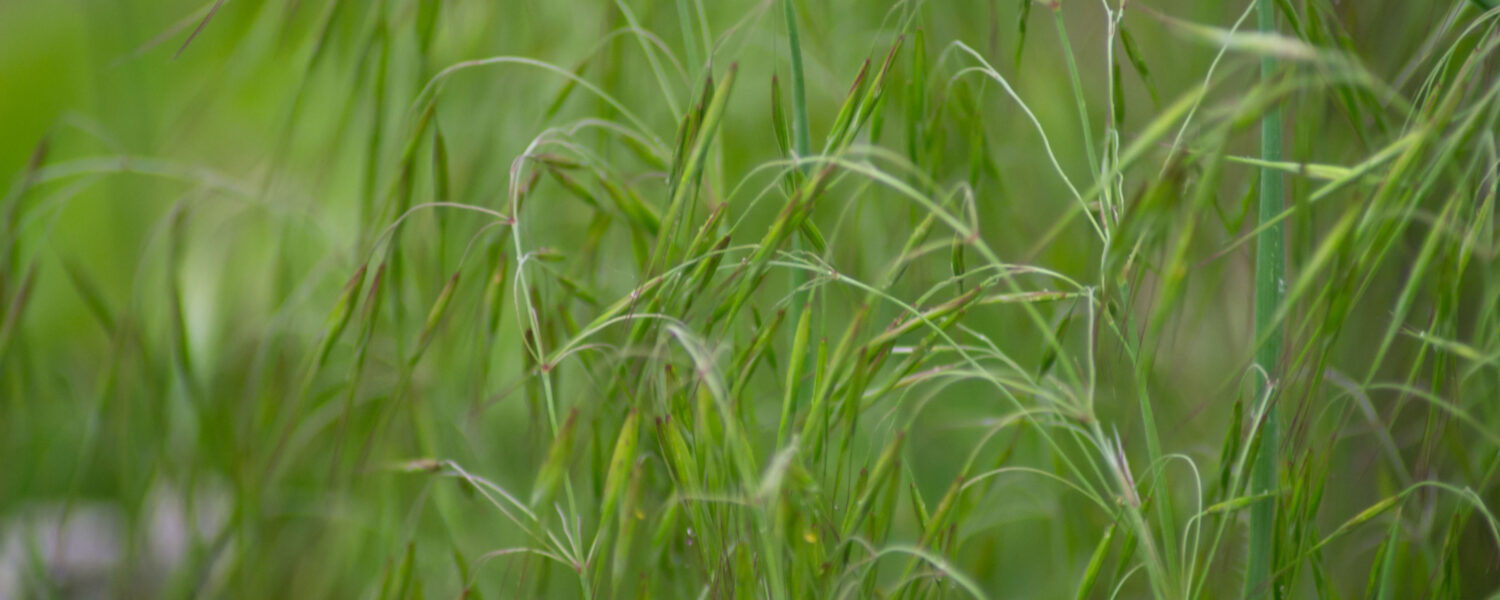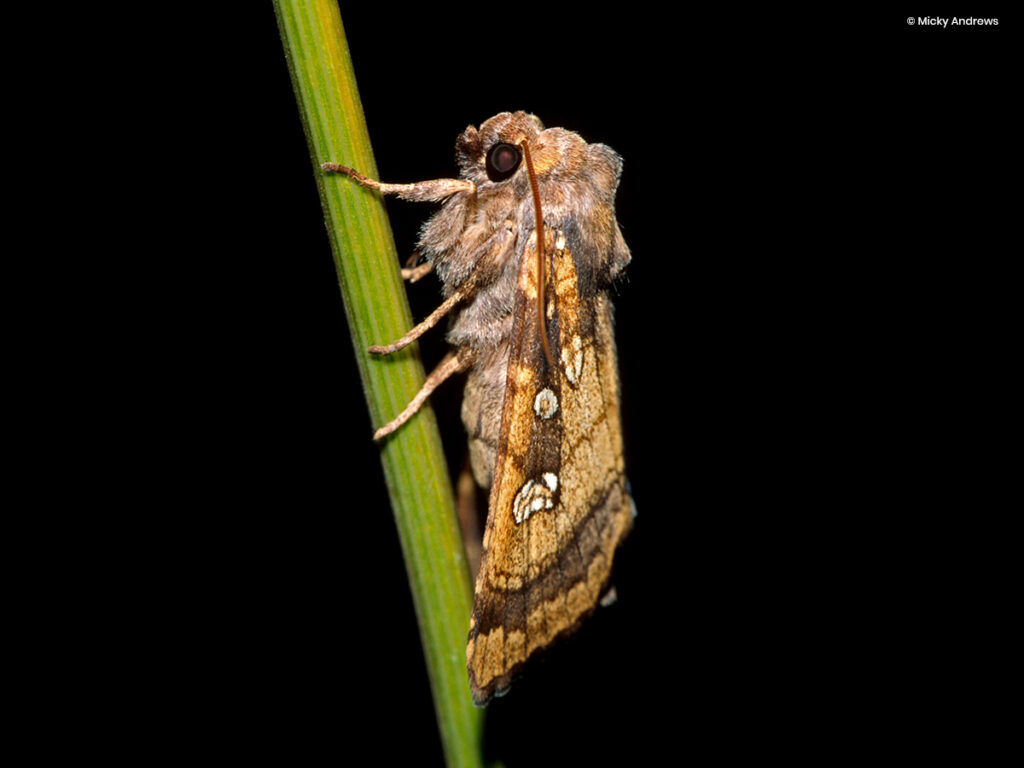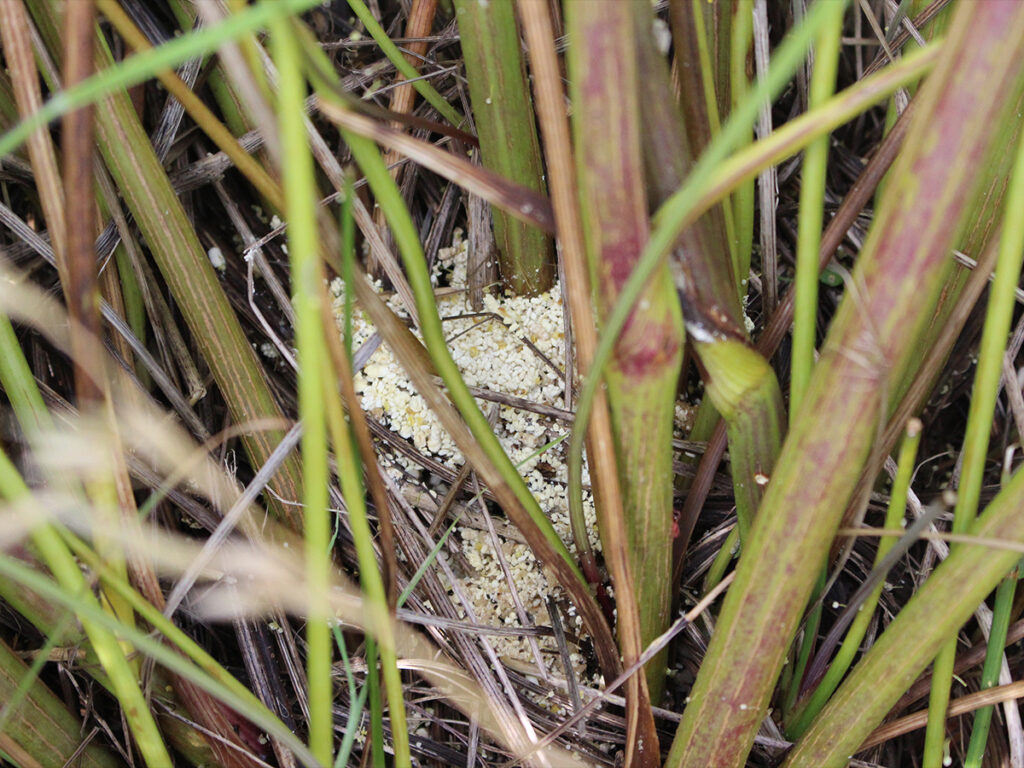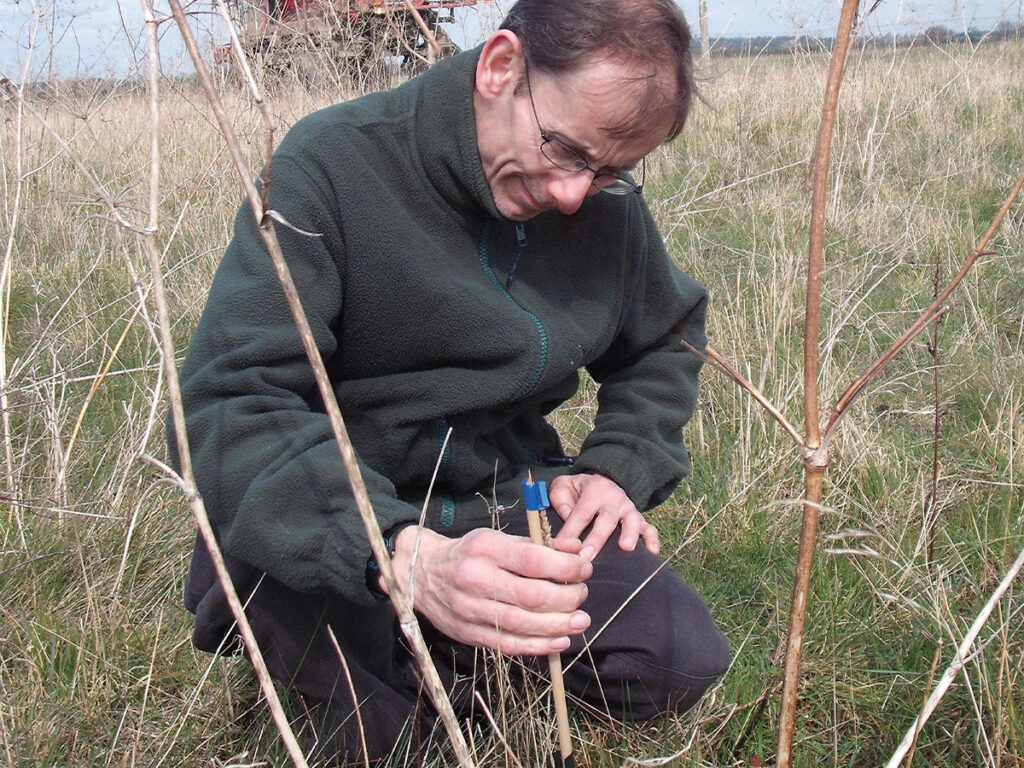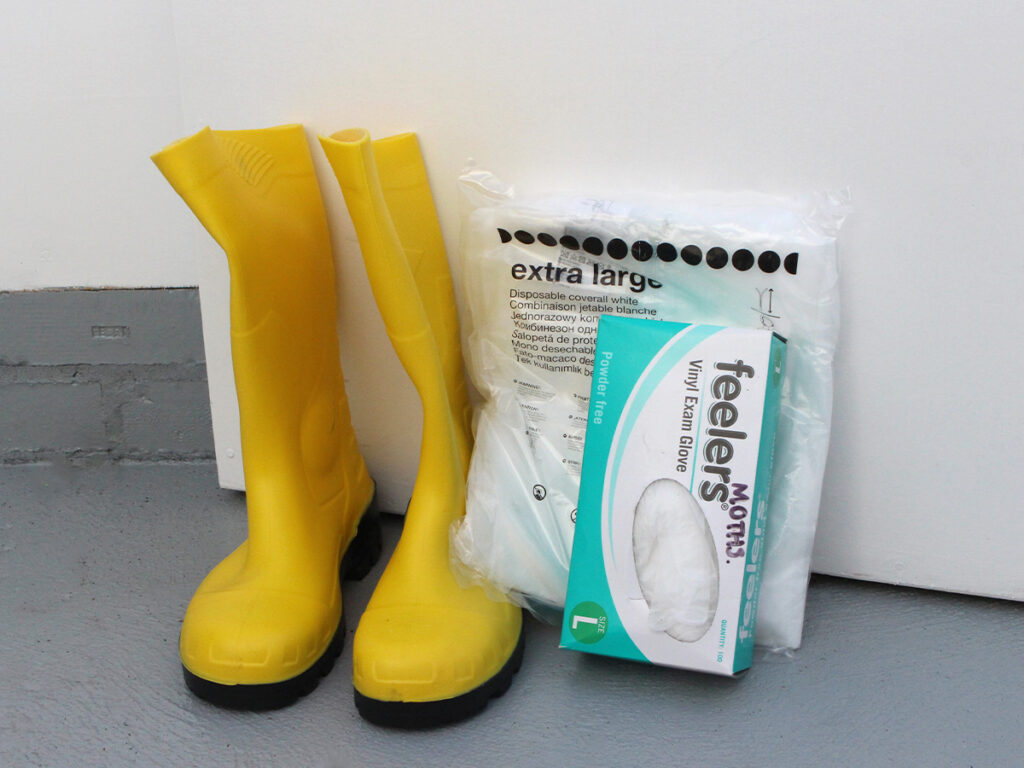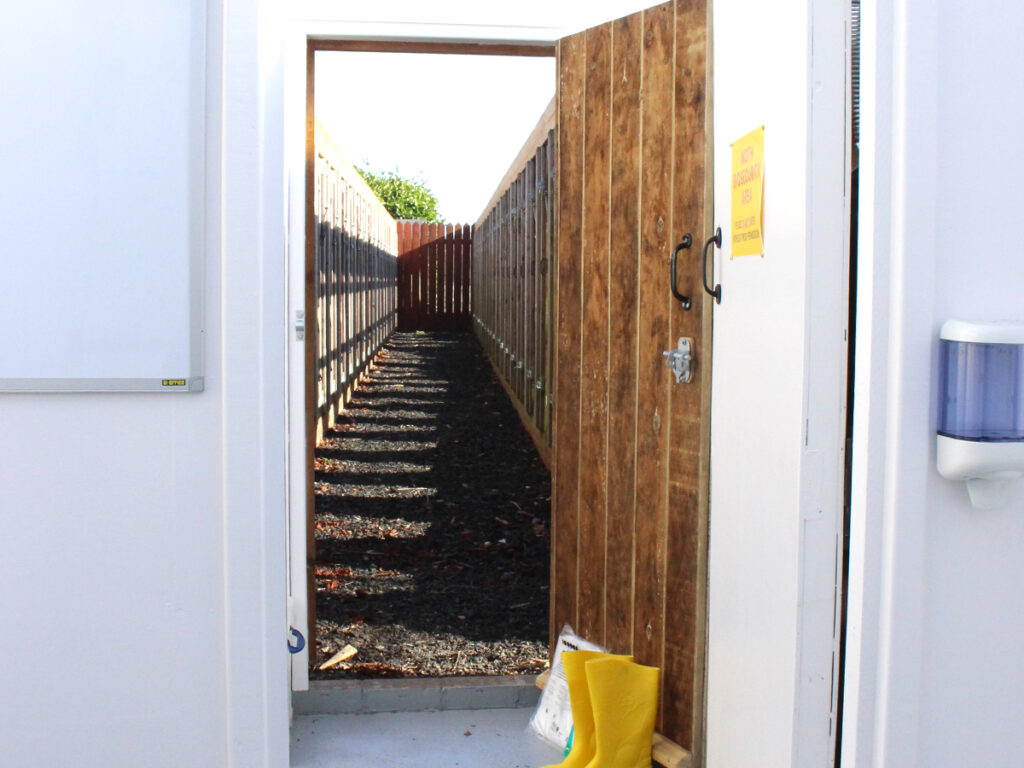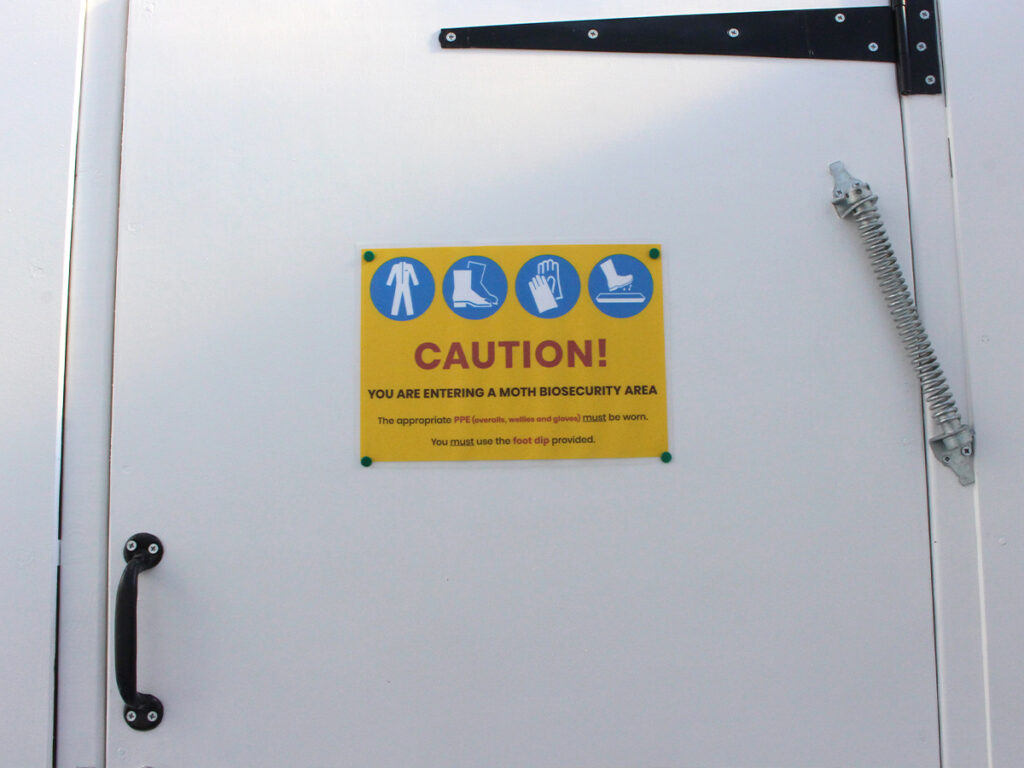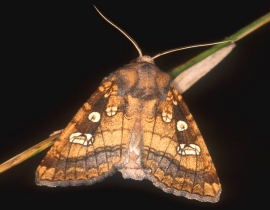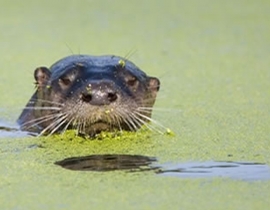Posted February 11, 2022 in Europe
Colchester Zoo’s Charity, Action for the Wild, helps to support a range of conservation projects around the world. Each year projects are selected in line with our mission, and since 2008, Action for the Wild has help to support the Fisher’s Estuarine Moth Breeding Programme.
The Fisher’s Estuarine Moth is a rare and a highly threatened British species and is a high conservation priority. The moth is completely reliant on the Hog’s fennel as its sole larval food plant; a plant species which itself is also threatened. This moth species is also reliant on long, coarse grass species to fulfil its egg laying requirements.
In the UK, Hog’s fennel is limited to two main localities; the north Essex coast and the north Kent coast. Suitable habitat for the plant is dwindling, due to rising sea levels along the coastline, mowing of the plant and trampling by dog walkers.
In 2006, a project was set up to plant up a sustainable landscape-scale network of Hog’s fennel sites. Funding has been made available through Natural England’s Higher Level Stewardship Scheme to encourage farmers and landowners to create areas of habitat for the moth on their land as well. The creation of habitat has, to date, involved planting 32 sites along the Essex coastline.
In 2008, Colchester Zoo teamed up with Tendring District Council, Natural England and Writtle College to initiate the captive breeding programme for the Fisher’s Estuarine Moth at Colchester Zoo. This will enable the species to be established at the newly-created sites of Hog’s fennel, without necessitating the translocation from naturally occurring sites where populations are relatively small and vulnerable. The breeding programme will thus provide a readily available supply of moths that will ensure the sustainability of the programme for the long-term.
Breeding cages are set up in an off-show location at Colchester Zoo and a Hog’s fennel plant and grass species placed in each cage to fulfil the moth’s life history requirements.
The caterpillars hatch in April and are immediately placed onto a Hog’s fennel plant, where they remain feeding throughout the summer until pupation. Adult moths then emerge in September – October and Colchester Zoo keepers ensure unrelated pairs are mixed for mating. Resulting eggs are then used for the following year’s captive breeding programme, and any additional eggs are released into the newly-created sites.
Since the release of the eggs into the wild, signs of caterpillars feeding and adult moths have been seen at the new sites. Each year, 50% of the newly created sites are surveyed and, in 2021, all except one of the surveyed newly-created sites had signs of the caterpillars feeding. Some of these have been populated by the breeding programme, but many have been colonised by the moth naturally as it expands its range over its new habitat.
• Dependant on plant size, one to four larva were placed on each plant. It’s important not to put too many caterpillars on each plant as they could decimate the root stock.
• In early July, our keepers checked each plant for signs of frass. Frass is a feeding sign of the caterpillars and was present on half of the plants.
• During the flight season, our keepers checked for moths from 5th September until 12th October every other night.
• Our first moth emerged on 18th September and the last 6th October.
• In total we had 14 moths emerge, 11 females and 3 males. This is about average for our larva-to-moth ratio of around 20-25%.
• We achieved 5 pairs by moving males around to maximise breeding
• In total, 18 egg stems were laid. Some of these will be kept back for the 2022 breeding programme and the rest released onto two of the newly created sites in the spring.
In 2021, members of Colchester Zoo staff and volunteers helped survey for signs of caterpillar feeding and sightings of adult moths.
In the wild, it is tricky to spot a Fisher’s Estuarine Moth as they can be confused with other moth species. By searching near or on Hog’s fennel plants, it does make spotting them easier Keepers can identify males versus females, as the females have a pointed back end in order to lay eggs and males are blunt ended.

